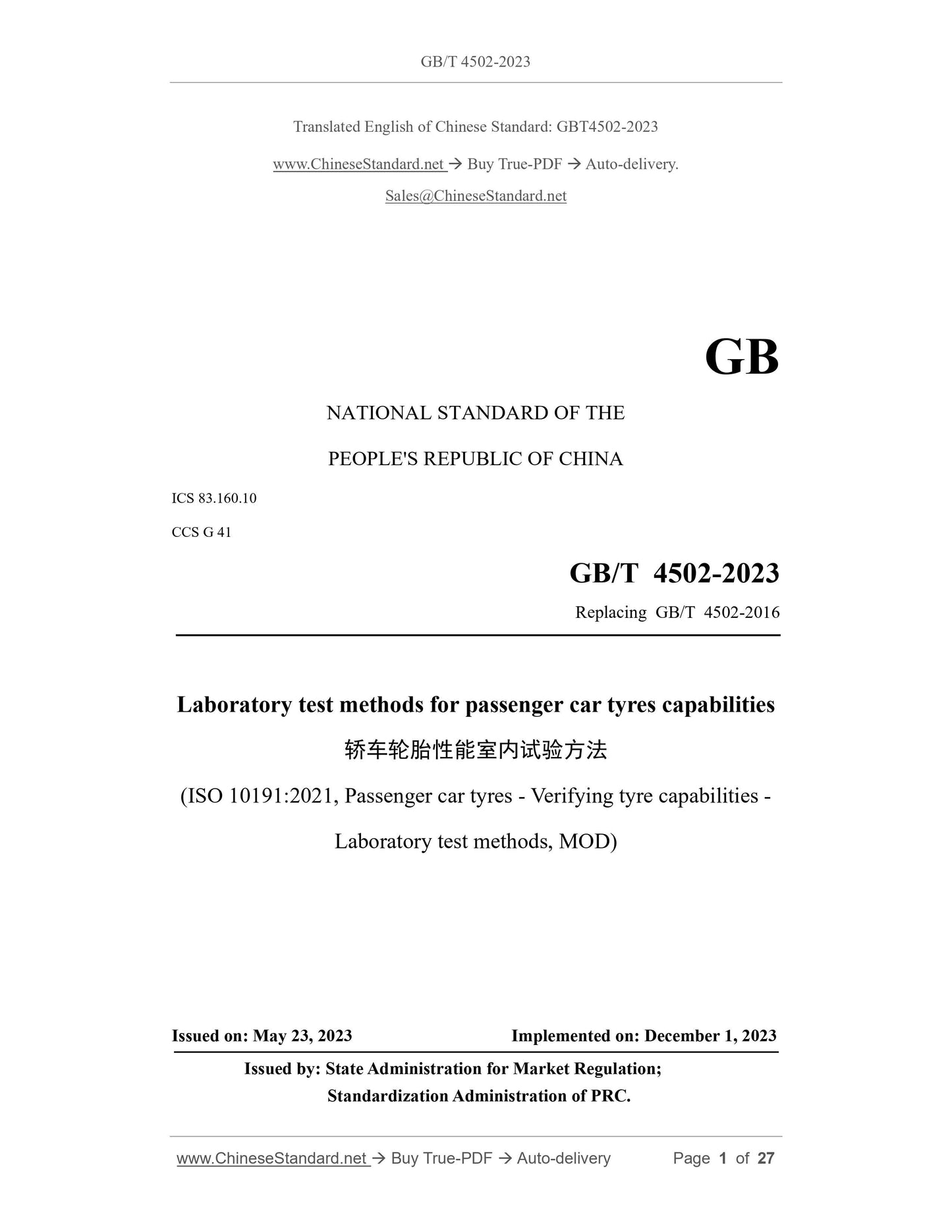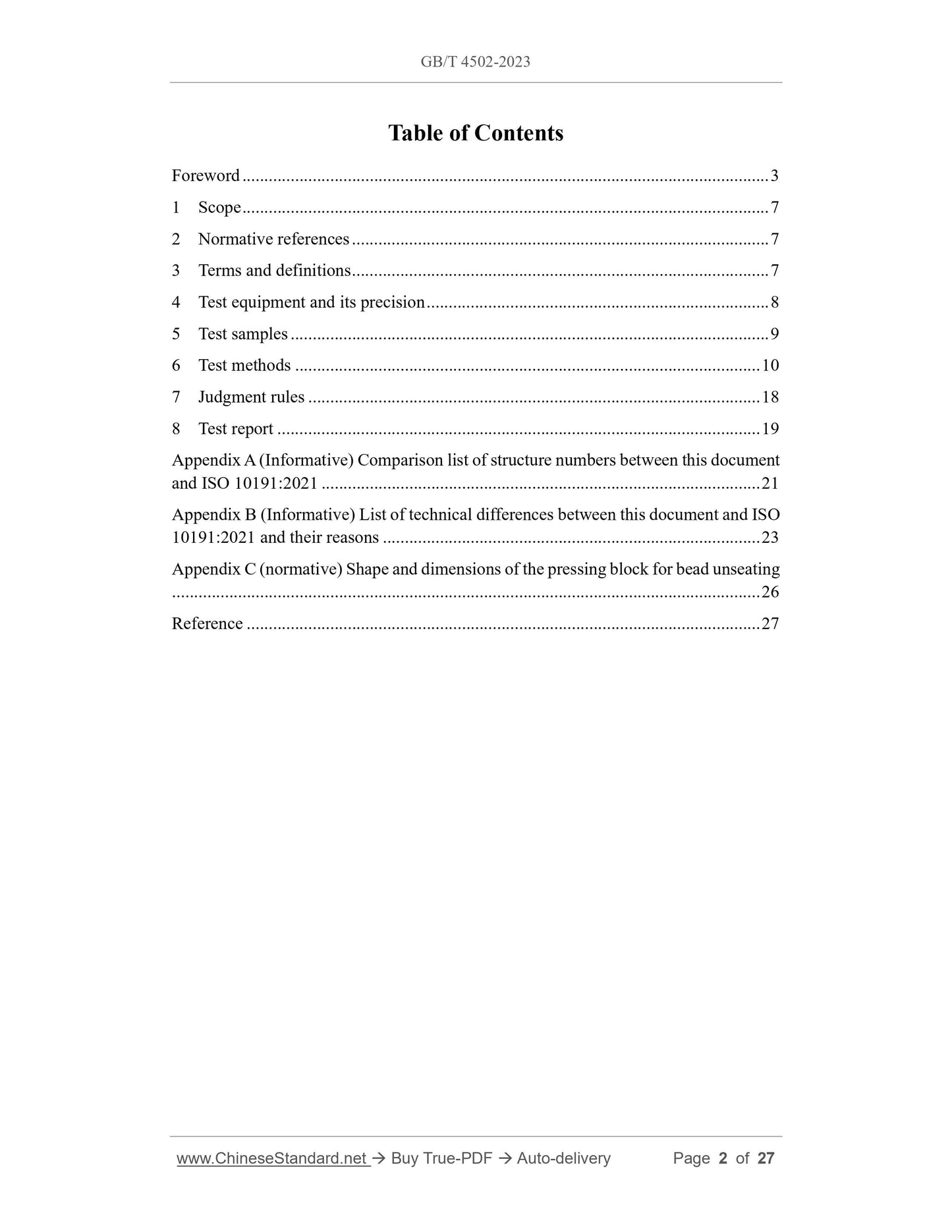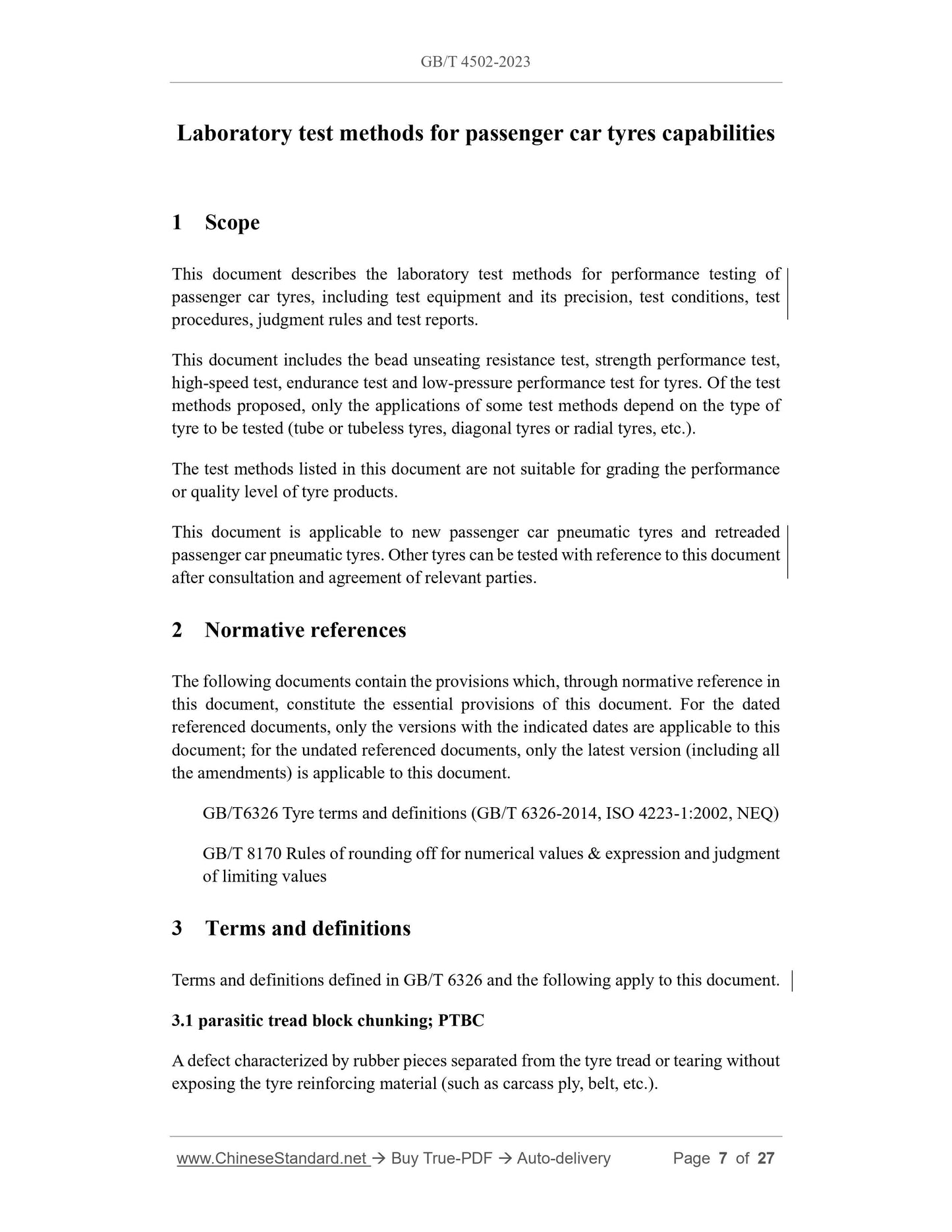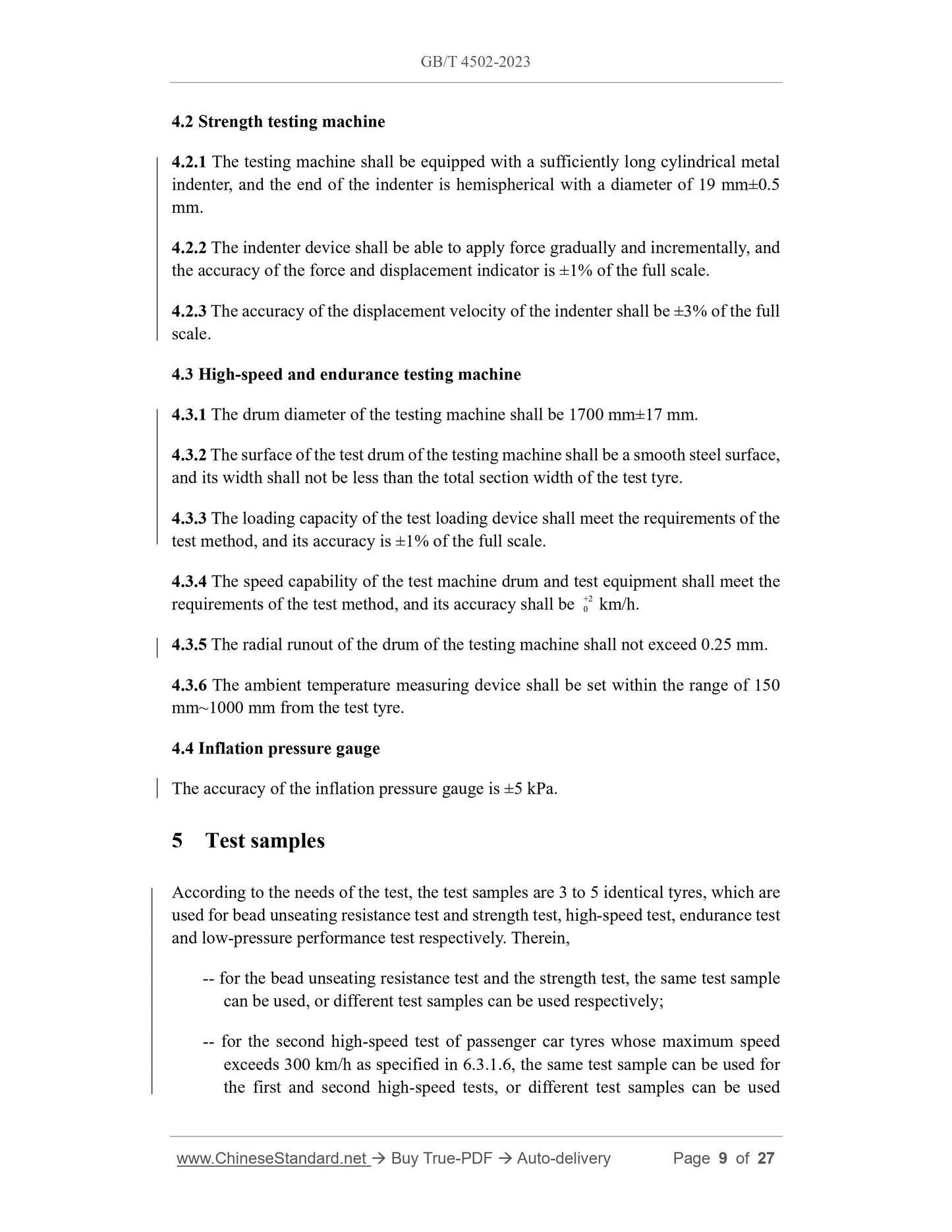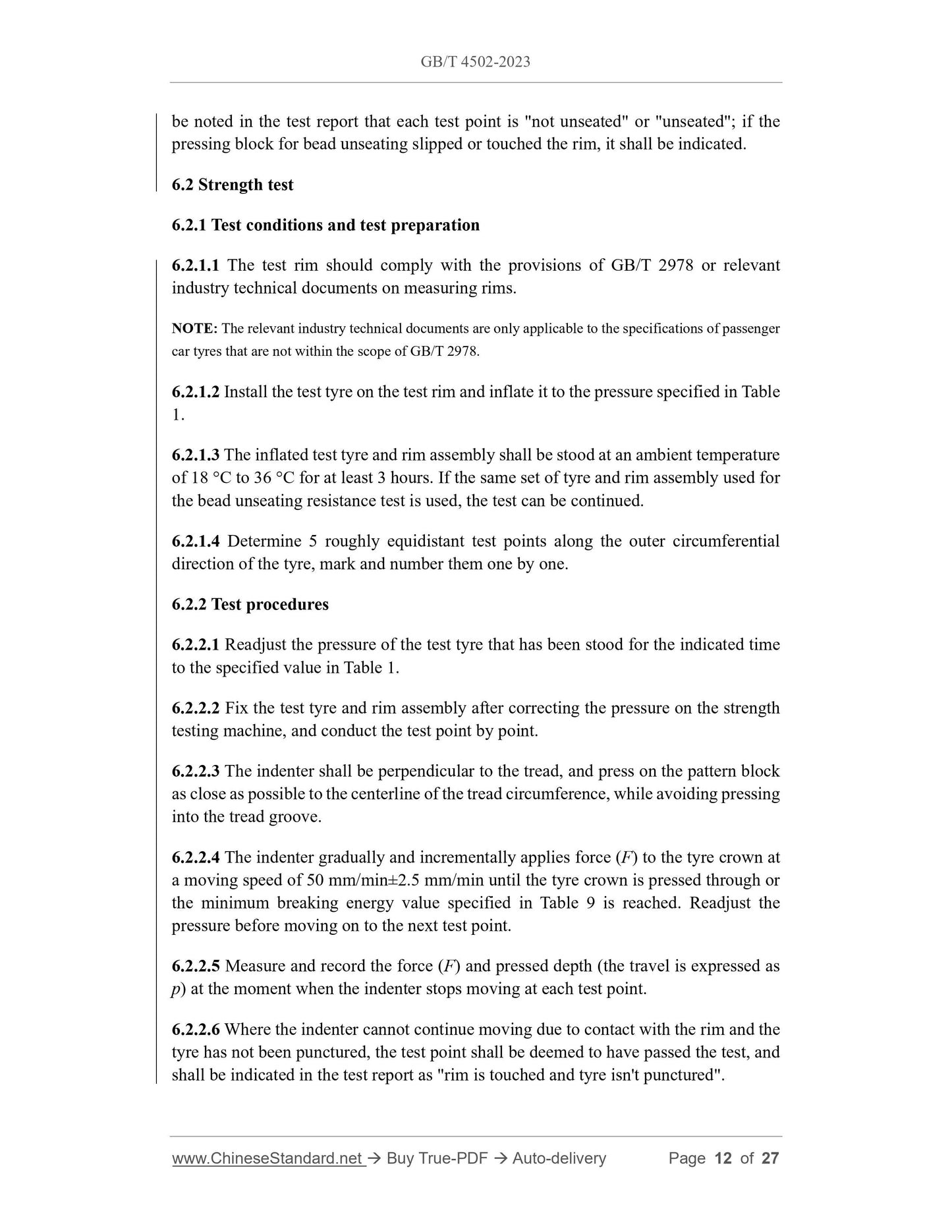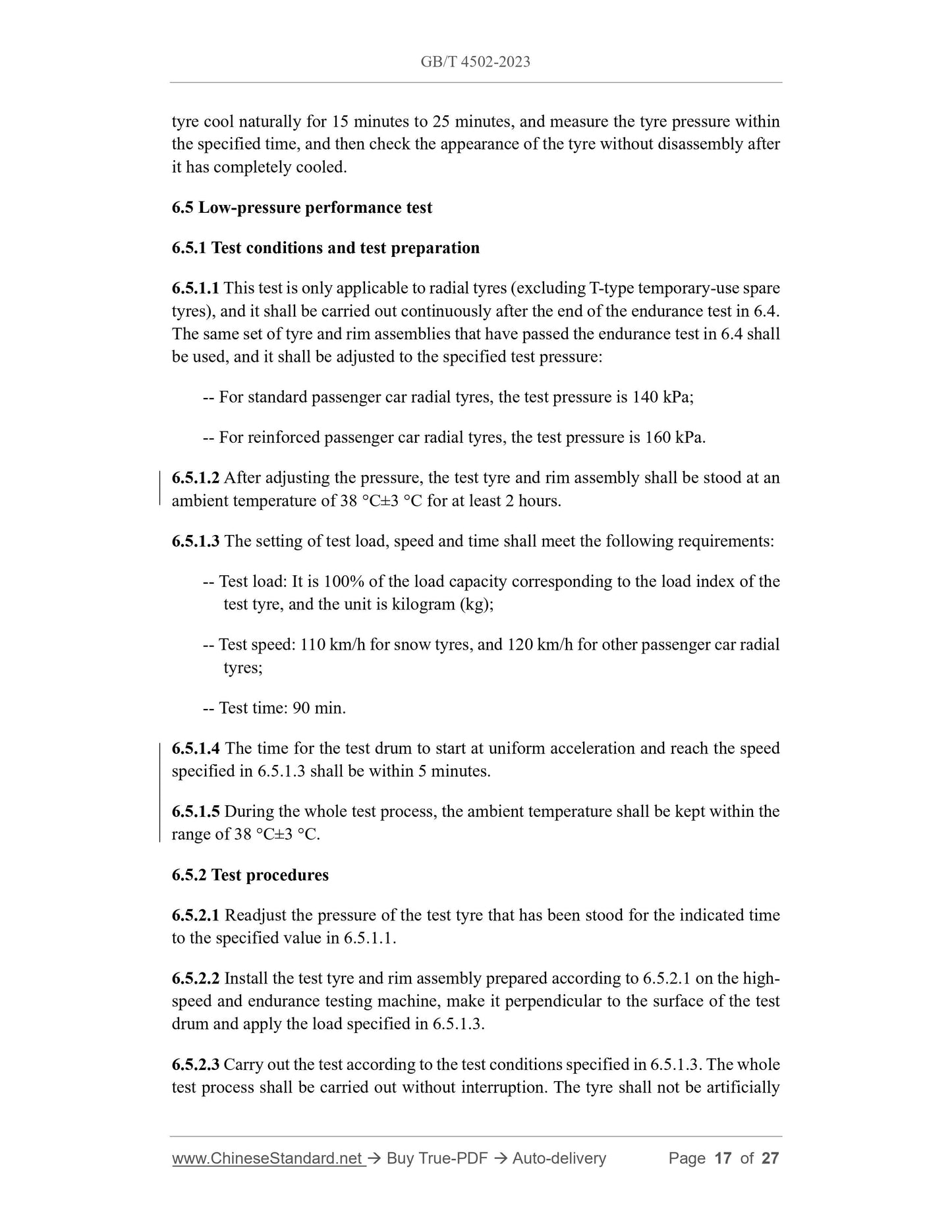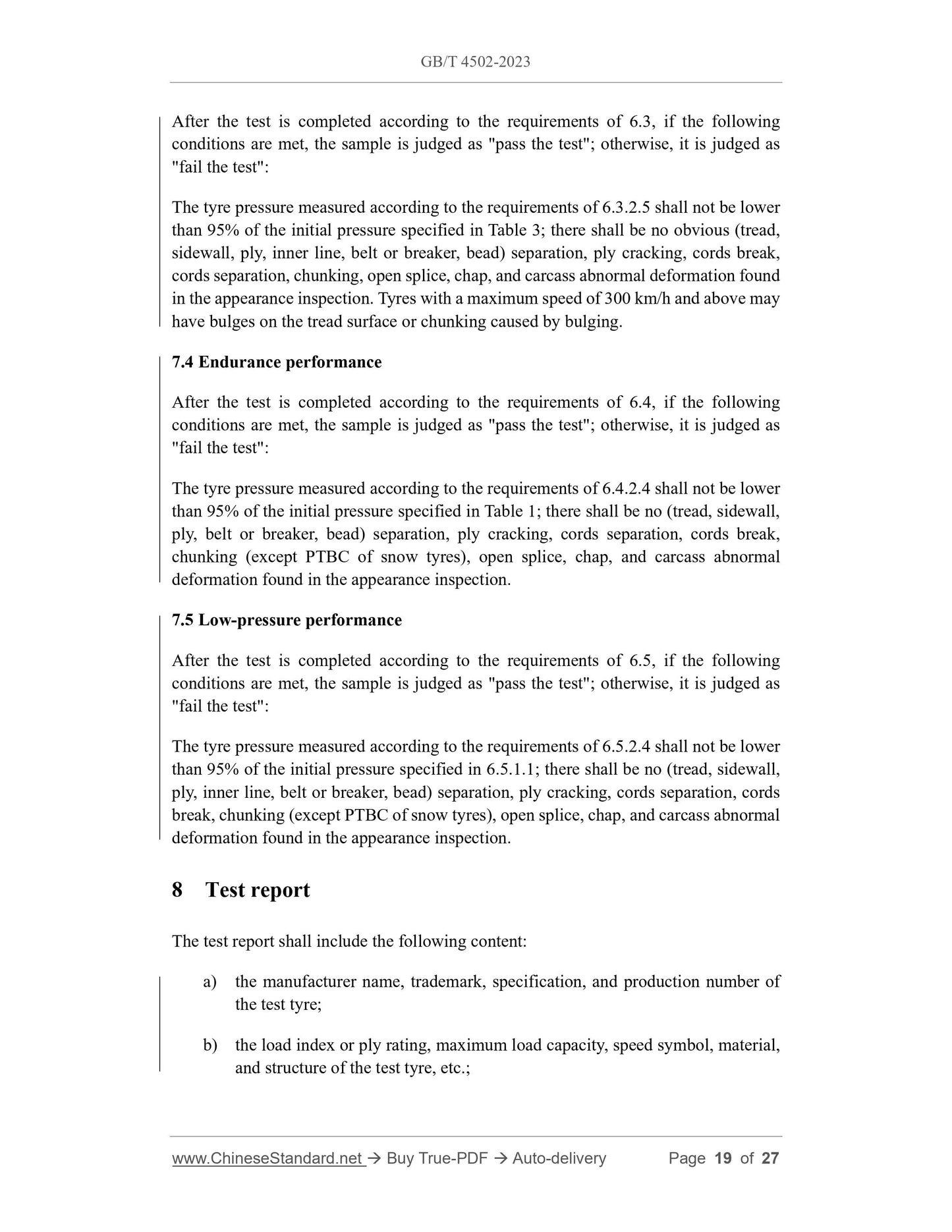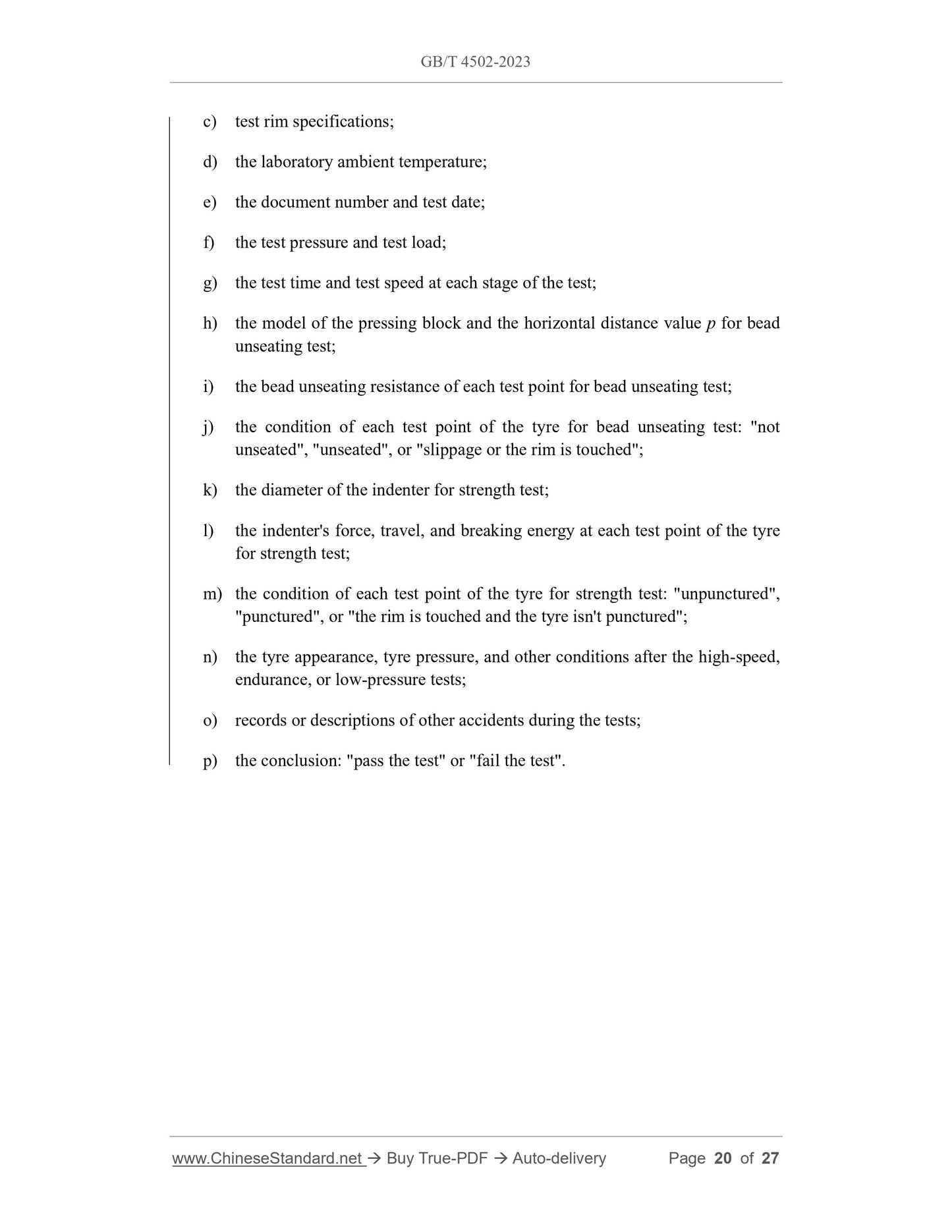1
/
of
8
www.ChineseStandard.us -- Field Test Asia Pte. Ltd.
GB/T 4502-2023 English PDF (GB/T4502-2023)
GB/T 4502-2023 English PDF (GB/T4502-2023)
Regular price
$290.00
Regular price
Sale price
$290.00
Unit price
/
per
Shipping calculated at checkout.
Couldn't load pickup availability
GB/T 4502-2023: Laboratory test methods for passenger car tyres capabilities
Delivery: 9 seconds. Download (and Email) true-PDF + Invoice.Get Quotation: Click GB/T 4502-2023 (Self-service in 1-minute)
Newer / historical versions: GB/T 4502-2023
Preview True-PDF
Scope
This document describes the laboratory test methods for performance testing ofpassenger car tyres, including test equipment and its precision, test conditions, test
procedures, judgment rules and test reports.
Basic Data
| Standard ID | GB/T 4502-2023 (GB/T4502-2023) |
| Description (Translated English) | Laboratory test methods for passenger car tyres capabilities |
| Sector / Industry | National Standard (Recommended) |
| Classification of Chinese Standard | G41 |
| Classification of International Standard | 83.160.10 |
| Word Count Estimation | 19,169 |
| Date of Issue | 2023-05-23 |
| Date of Implementation | 2023-12-01 |
| Older Standard (superseded by this standard) | GB/T 4502-2016 |
| Issuing agency(ies) | State Administration for Market Regulation, China National Standardization Administration |
Share
